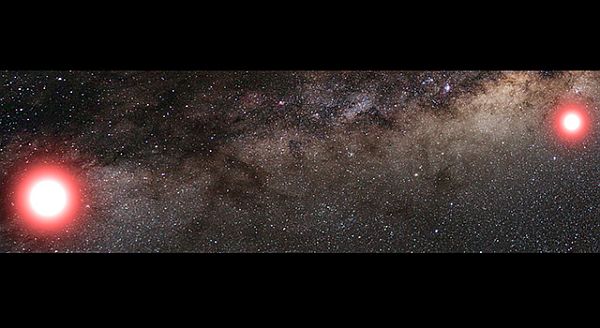Lately a binary star system has attracted attention of many space scientists. This binary system consists of twin stars, mutually orbiting around a common center of mass. Situated around 3,000 light years away from Earth, astronomers’ expecting that it could shed some information regarding similar Earth like bodies floating in space.
The planet weighs twice that of the Earth and orbits, in binary system, one star. Distance between the two corresponds to the distance between the Earth and the Sun. However, unlike the Sun, the planet’s host star is dimmer making the planet colder relatively just like Europa, Jupiter’s icy moon.
Planets in Binary Star System
The finding insinuates that there could be a probability of existence of more such planets, even in binary system, that may have been orbiting like that of Earth. Although the current scenario reflects that the planets coldness might have resulted in no habitable zone but had the planet, even in binary system, revolving around a warmer star like that of Sun, would have chances of having sustainable zone for habitation; which means, chances are bright of discovering habitable planets across the solar system and even beyond that.
This is not the first time that planets in binary star systems have been discovered. In 2006, NASA’s Spitzer Space Telescope discovered planets thriving around steller twins and in 2011, Kepler’s discovery confirmed first planet orbiting two stars. Nevertheless, upon further investigations it was discovered that the dust structures in both were far from that of the planet Earth.
Gravitational Microlensing, the Tool
Gravitational microlensing is the method that is being employed by the astronomers for finding the planet. The phenomenon makes use of gravitational lens effect. In this technique, light of the star that is at the great distance is magnified with the help of star, which is closer relatively, and happen to pass in front. At time, light of the background star is also distorted with the presence of planet around the foreground star.
Although, exploring planets with binary systems is not an easy task since light from the second star creates complexities with respect to interpretation of the data. It is here the gravitational microlensing comes into play and ignores the unwanted light from the star-planet system. Focus is then made on the affect of gravity on light. Thus providing a better and clear understanding of what exactly is going on the aerospace. The tool is definitely a boon to the astronomers who are looking for planets in binary star systems since nearly half the stars in the galaxy are in binary systems.
Source: NASA Jet Propulsion Laboratory




